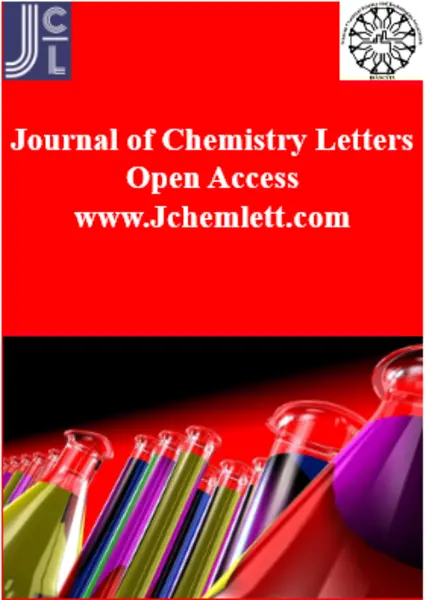-
design and application of biosorbent (opuntia fragalis leaves) for the removal of heavy metal from human blood plasma
جزئیات بیشتر مقاله- تاریخ ارائه: 1401/12/01
- تاریخ انتشار در تی پی بین: 1401/12/01
- تعداد بازدید: 135
- تعداد پرسش و پاسخ ها: 0
- شماره تماس ژورنال: 989360221112
design and application of biosorbent (opuntia fragalis leaves) for the removal of heavy metal from human blood plasma
environmental pollution is a potential threat to human health mainly because of the non-biodegradable and hazardous heavy metals. among these heavy metals, lead is of considerable concern. various methods adopted for removal of heavy metals include chemical precipitation, membrane separation, ion exchange and adsorption. in case of adsorption, the generally used adsorbents like activated carbon, silica, alumina, etc. are expensive.
this has prompted the use of natural materials as biosorbents in order to develop cheaper alternatives, which can be disposed of without regeneration due to their lower cost. this study seeks to investigate the efficiency of opuntia fragalis leaves as biosorbents for the removal of pb (ii) ions from human plasma using response surface methodology (rsm). the effect of adsorption factors; adsorbent dose (a), concentration of pb (ii) ions (b), ph of solution (c) and contact time (d) was optimized.
the percentage removal of pb (ii) ions increased as the biosorption factors increased. the optimal removal of pb (ii) ions was attained at 95%. the surface chemistry of the biosorbent was analyzed using scanning electron microscope, revealed an appreciable level of porosity and ability of biosorbent to adsorb pb (ii) ions from human plasma. the ftir results showed that –c-br, -c-n, -c-o, -c-c, -n-h and –oh functional groups were responsible for pb (ii) ions adsorption from human plasma.
the lack of fit model have p-value greater than 0.05 with f-value of 0.27, implies non-significant lack of fit relatively due to the pure error and 97% lack of fit is caused by noise. the kinetics of the adsorption processes were investigated and data were subjected to pseudo first order, pseudo second order and elovich models. the adsorption process fits into pseudo second order model with r2 = 0.9991. the equilibrium data was analyzed using isotherm models and langmuir isotherm model with r2 = 0.8932 indicated pb (ii) ions uptake from human plasma occurred on the same pore space without having interactions amongst themselves thereby exhibiting monolayer adsorption.
حوزه های تحت پوشش ژورنال
مقالات جدیدترین رویدادها
-
استفاده از تحلیل اهمیت-عملکرد در ارائه الگوی مدیریت خلاقیت سازمانی و ارائه راهکار جهت بهبود
-
بررسی تاثیر ارزش وجوه نقد مازاد بر ساختار سرمایه شرکت های پذیرفته شده در بورس اوراق بهادار تهران
-
بررسی تأثیر سطح افشای ریسک بر قرارداد بدهی شرکت های پذیرفته شده در بورس اوراق بهادار تهران
-
بررسی تأثیر رتبه بندی اعتباری مبتنی بر مدل امتیاز بازار نوظهور بر نقد شوندگی سهام با تأکید بر خصوصی سازی شرکت ها
-
تأثیر آمیخته بازاریابی پوشاک ایرانی بر تصویر ذهنی مشتری پوشاک ایرانی (هاکوپیان)
-
اثربخشی درمان شناختی - تحلیلی بر اجتناب تجربه ای بیماران مبتلا به اختلال شخصیت
-
معرفی و تحلیل پارامترهای یک منحنی ریاضی جدید برای استفاده در قوس های راهسازی
-
سنجش نیازهای آموزشی دختران نوجوان پیرامون بهداشت باروری و تعیین راهبردهای مناسب برای تأمین آن در قزوین
-
تاثیر افزودن عصاره الکلی بره موم و اسانس زیره سبز بر پاسخ ایمنی جوجه های گوشتی
-
physical modeling of an optical memory cell based on quantum dot-in-well hybrid structure
مقالات جدیدترین ژورنال ها
-
مدیریت و بررسی افسردگی دانش آموزان دختر مقطع متوسطه دوم در دروان کرونا در شهرستان دزفول
-
مدیریت و بررسی خرد سیاسی در اندیشه ی فردوسی در ادب ایران
-
واکاوی و مدیریت توصیفی قلمدان(جاکلیدی)ضریح در موزه آستان قدس رضوی
-
بررسی تاثیر خلاقیت، دانش و انگیزه کارکنان بر پیشنهادات نوآورانه کارکنان ( مورد مطالعه: هتل های 3 و 4 ستاره استان کرمان)
-
بررسی تاثیر کیفیت سیستم های اطلاعاتی بر تصمیم گیری موفق در شرکتهای تولیدی استان اصفهان (مورد مطالعه: مدیران شرکتهای تولیدی استان اصفهان)
-
بررسی فقهی و حقوقی جایگاه شهادت در امکان یا عدم آن در توکیل پذیری
-
تحلیل رفتار پس از کمانش قاب به روش الاستیکا
-
ارائه مدل ساختاری سازی تفسیری بررسی عوامل اجتماعی فرهنگی موثر بر هویت فرهنگی
-
تهیه تقویم گردشگری استان کردستان در مقیاس روزانه براساس شاخص زیست اقلیمی set
-
رابطه تنبیه بدنی پسران و میزان عزت نفس و پرخاشگری آنها


سوال خود را در مورد این مقاله مطرح نمایید :